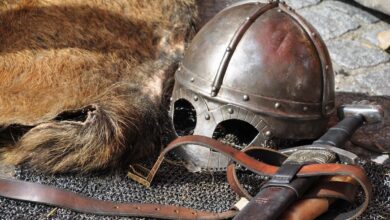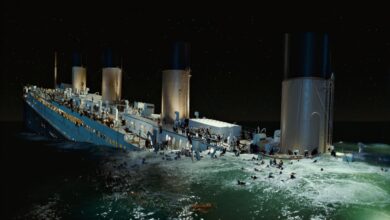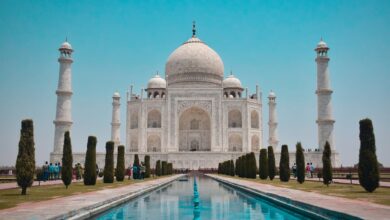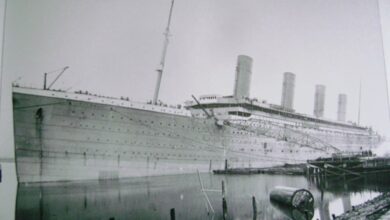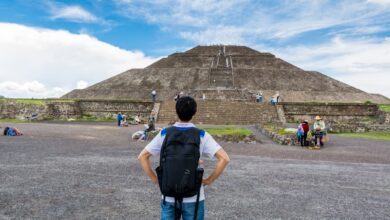Why Do We Celebrate The Festival Of Holi?
Why Do We Celebrate The Festival Of Holi? Unraveling the Magic & 9 Things You Must Understand
The festival of Holi, also known as the Festival of Colors, is a vibrant and joyous celebration that takes place every spring in India. It is a time when people come together to welcome the arrival of spring and bid farewell to winter.
Holi is renowned for its exuberant display of colors, which are used to create an atmosphere of fun, happiness, and unity.
In this article, we will explore the origins and significance of Holi, as well as delve into the cultural celebrations and traditions associated with this colorful festival.
Origins and Significance of Holi
Holi has its roots in Hindu mythology and is believed to commemorate various legends associated with Lord Krishna.
One such legend revolves around Lord Krishna’s mischievous playfulness during his youth, where he would smear colors on his companions’ faces using water guns called ‘pichkaris’. This act became a symbol not only of love but also of forgiveness, friendship, camaraderie, and overcoming differences.
Another popular legend associated with Holi tells the story of Holika Dahan. According to ancient folklore, Holika was an evil demoness who was impervious to fire.
However, pure-hearted Prahlada survived unharmed despite being thrown into a bonfire by her evil brother King Hiranyakashipu – thanks to Lord Vishnu’s protection, while Holika perished in flames instead.
These legends encapsulate important values such as triumph over evil forces (represented by Holika) through good deeds (embodied by Prahlada). They teach us about spreading love throughout society irrespective of caste or creed.
Cultural Celebration and Traditions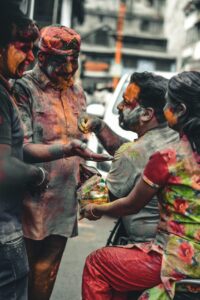
Holi celebrations begin with rituals performed on the evening before the main day, known as Choti Holi or Holika Dahan. People gather around bonfires in their neighborhoods where effigies representing demons are burned, symbolizing the victory of good over evil. This event signifies purification and the casting away of negativity.
Holi festivities continue on the following day, known as Holi or Rangwali Holi, which is marked by a riotous colorful play of powders and water among friends, neighbors, and strangers alike. People roam around in groups smearing each other with vibrant gulal (colored powder) and spraying colored water using pichkaris – creating an atmosphere filled with laughter and cheer.
The Play of Colors
The highlight of Holi is undoubtedly the play of colors. People drench each other in the water and throw colored powders at one another, creating a kaleidoscope of vibrant hues. This playful act of coloring symbolizes breaking barriers and promoting unity among people.
Each color used during Holi holds symbolic meaning. Red represents love and purity, while yellow is associated with turmeric’s healing properties and wealth. Green signifies vitality, growth, and new beginnings, while blue is connected to Lord Krishna’s skin tone and his mischievous nature.
Purple embodies power and ambition, while pink represents happiness and friendship. The combination of these colors creates a visual spectacle that fills the air with joyous energy.
Traditional Holi Foods
No festival is complete without indulging in delicious food, and Holi is no exception. One popular treat enjoyed during this time is “gujiya” – a sweet dumpling made from flour stuffed with fillings like khoya (thickened milk), coconut, nuts, or dried fruits.
Another traditional dish prepared during Holi is “thandai,” a refreshing drink made from a mixture of milk, almonds, fennel seeds, and cardamom powder that also contains an ingredient called “bhang.” Bhang adds an intoxicating effect to the beverage, but its consumption varies based on regional laws.
Safety Measures During Holi
While Holi is all about fun-filled frolics with colors, many people across India, including children and elders, are often concerned about taking necessary precautions to protect their skin and hair against harsh chemicals present in synthetic colorants that may cause allergies or irritation.
To safeguard your skin from harmful effects caused by artificial colors used during Holi celebrations, simple measures can be taken, such as applying oil or moisturizer to create a protective barrier before playing with colors that prevent dryness due to chemical exposure. Avoiding direct sunlight also helps minimize the impact of colors on your skin.
Similarly, taking precautions for your hair is essential. Apply coconut oil or any other suitable hair oil to create a protective layer before participating in Holi celebrations. This will make it easier to remove color from your hair later.
Choosing Safe and Natural Colors
Using natural and herbal colors made from ingredients like turmeric, henna, flowers, and vegetable dyes not only ensures safety but also promotes eco-friendly celebrations.
These organic colors are easily available in the market or can even be made at home by grinding and mixing natural ingredients. They not only provide a safer alternative for the skin and hair but also contribute to the preservation of the environment.
Why We Celebrate The Festival Of Holi Around The World
Holi is primarily celebrated in India, but its popularity has spread across borders, captivating people from diverse cultures and nationalities. Let’s explore how Holi is celebrated in different parts of the world!
In India, Holi is a nationwide celebration that brings people together regardless of their social or cultural backgrounds.
The streets are filled with laughter, music, and dancing as everyone indulges in vibrant colors and water fights. People visit friends and family, exchanging greetings and sweets, and spreading love.
Holi-Inspired Festivals Worldwide
Outside of India, many countries have embraced the spirit of Holi by organizing their own versions of color festivals inspired by this ancient Indian tradition.
For example, “The Festival of Colors” in Utah, USA, attracts thousands of participants each year who come together to share joy through music and throwing brightly colored powders at one another.
Similarly, countries like Nepal (where Holi is known as “Fagu Purnima”), Trinidad & Tobago (“Phagwah”), Guyana (“Phagwa”), Mauritius (“Hippie Color Festival”), Spain (“La Tomatina”) host their own variations influenced by Indian culture.
Environmental Impact When We Celebrate The Festival Of Holi
While Holi is undoubtedly a joyous occasion, it is important to consider its environmental impact. The excessive use of water and synthetic colors can lead to pollution and waste.
Water scarcity is a significant concern in many parts of the world, making it essential to conserve this precious resource even during festivities.
Instead of using large amounts of water for playing with colors, we can opt for dry powdered colors which minimize water usage. Additionally, organizing community events where limited quantities of colored water are used can help reduce wastage.
An increasing number of people are recognizing the importance of celebrating festivals in an environmentally friendly way. Using organic and natural colors made from fruits, flowers, or herbal sources eliminates harmful chemicals while promoting sustainable practices.
Furthermore, reducing waste by using biodegradable plates and avoiding single-use plastics contributes towards creating a cleaner environment both during and after the celebrations.
Celebrate The Festival Of Holi Conclusion
The festival of Holi encapsulates love, unity, vibrancy, and joy as people come together to celebrate the arrival of spring. Understanding its origins helps us appreciate its cultural significance, while learning about safety measures ensures that everyone can participate without harm.
As we traverse through different countries’ colorful celebrations and the influence of Holi in Bollywood, we see how this festival has transcended borders and made its mark worldwide.
By adopting eco-friendly practices, we can ensure that our festivities leave a positive impact on both ourselves and the environment. So, let’s embrace the magic of colors in the air during Holi while spreading happiness and goodwill to one and all.
